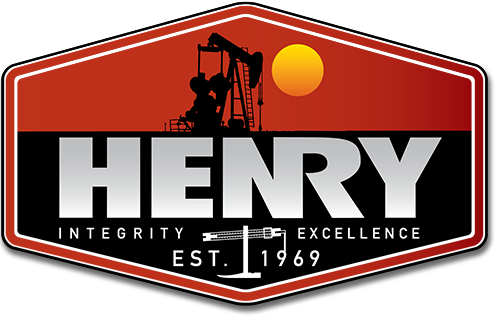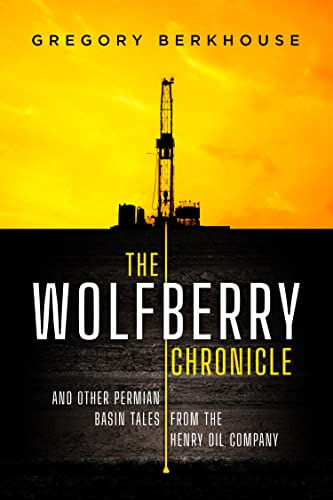Our History
Jim Henry and Bob Landenberger form H & L Consultants on November 1, 1969, specializing in the Spraberry Trend Area.
H & L forms a three-tiered business plan:
- work as consultants
- become contract operators
- buy working interests in operating wells, increasing the percentage over time
When H&L was conceptualized, Paula Henry’s encouraging words — “Let’s Do It!” — motivated Jim and Bob to a strong start. Even today, 50 years later, Jim calls Paula’s support “The single most important “Let’s Do it” in company history.”
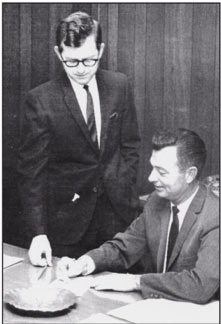 Jim Henry (left), Bob Landenberger.
Jim Henry (left), Bob Landenberger.- Henry & Landenberger, Inc. drills its first well, the Stephens No. 1, and begins operating properties in earnest. Henry & Landenberger spent $2,500 prepping the site and for fees to the landowner, leaving Jim and Bob with a $6,000 profit — a total that would have taken the partners six months to earn in the consulting business.
- H & L lands a contract with Hanover Planning for the 6-6-3 Project. The contract guaranteed H & L could drill six wells and if all were successful, drill six more. If the second round of six were also successful, a final round of three wells could be drilled. When all costs were considered, H & L would net $6,000 per well for the 15-well project, a boon for the young organization.
- The 6-6-3 Project is still considered one of the landmark ventures for Henry & Landenberger and laid the groundwork for many additional projects that would follow.
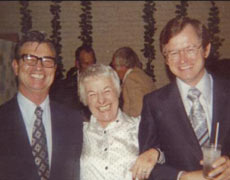 Bob Landenberger (left), Pete Minerly (center), and Jim Henry.
Bob Landenberger (left), Pete Minerly (center), and Jim Henry.Jim Henry buys out Bob Landenberger and renames the company Henry Petroleum. Bob and Jim had owned all company interest in wells under the name H & L Consultants, an entity kept alive after the firm incorporated in 1971 as Henry & Landenberger.
“I bought out Bob’s interest in Henry & Landenberger, which meant I bought his interest in all the furniture, the trucks, and every tangible asset we had. I hated to see Bob go. He was my rock,” Jim Henry said.
 Jim Henry hard at work.
Jim Henry hard at work.- Dennis Johnson and Dave Feavel join Henry.
- Henry ventures into the Austin Chalk, drilling three high-yield wells before running into a series of dry holes.
- Jim met with his worst nightmare in 1986 – a sharp decline in oil prices led to employee layoffs. Jim vowed then to never again lay off workers due to poor company financials — and hasn’t.
- Henry unitizes and waterfloods the Phoenix-Grayburg Field, significantly increasing the company’s net worth and bumping production from 40 to 400 bopd.
- Henry forms joint venture with New York Life on a large Spraberry drilling program. The standard arrangement for the company at the time was to keep 5-10% working interest in each project. Henry would then sell the remaining 90-95%, promoted with a 7% carried working interest and a 7% capital fee. Dubbed the 7 & 7 structure, the promote was essential to the well-being of the company through the 80s downturn.
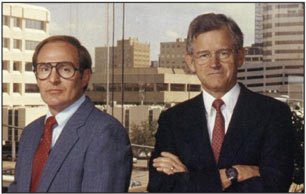 Dennis Johnson (left), and Jim Henry.
Dennis Johnson (left), and Jim Henry.- Henry Petroleum moves into its new office at 3525 Andrews Highway.
- Henry begins Major & Independent Partnering (MIP) phase. The first of many MIP acquisitions for Henry leads to the unitization of the Shafter Lake Field. Production topped 1,000 bopd by August 15, 1996, and two years later, 2,000 bopd.
- Henry acquires the East Ackerly Dean Unit. The agreement required Henry to drill 20 wells in nine months in order to earn an interest in the wells. Henry would end up drilling 33 in nine months, at an average cost of $284,000 per well.
- Henry acquires Oklahoma Sho-Vel-Tem property from ARCO, becoming one of the few independents in the 90s to purchase a CO2 project.
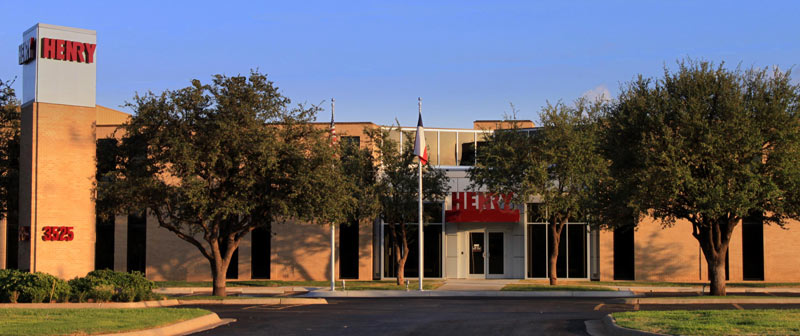 Henry office building on Andrews Highway.
Henry office building on Andrews Highway.- Dennis Johnson officially succeeds Jim Henry as President of Henry after having run its day to day operations as Executive Vice President and Chief Operating Officer since 1986.
- Henry forms joint venture with Mobil, now Exxon, involving the Parks & Pegasus fields. Originally considered a Spraberry project, the Mobil JV ultimately morphed into what would be a Wolfberry development.
- When Concho purchased Henry ten years later in 2008, the Parks & Pegasus JV with Mobil would be the highest-valued asset Henry sold to Concho.
 Paula and Jim Henry on location.
Paula and Jim Henry on location.- In 2001, Henry drills its first horizontal well in Midland County. It is still remembered by Jim Henry as "The Devonian Well" due to the difficulty the company had drilling and completing it.
- Henry began leasing and drilling the vertical Wolfberry Play in the Midland Basin in 2003; ultimately leasing 330,000 acres. Henry would drill and complete 650 Wolfberry wells, running up to 10 rigs during this explosive period of company growth.
- Doug Robison, David Feavel and Michael LaMonica leave Henry to form ExL Petroleum. ExL would go on to become a very successful Permian Basin operator.
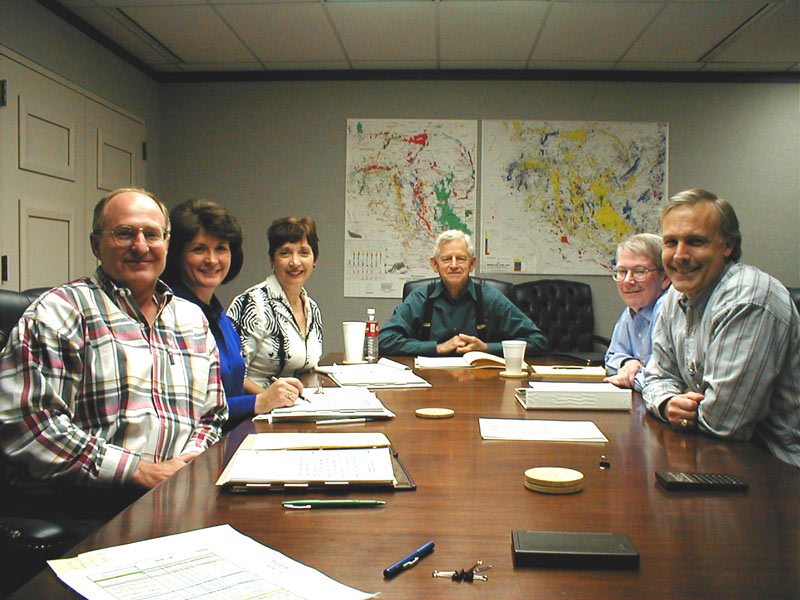 From left; Dennis Johnson, Laquita Johnson, Paula Henry, Jim Henry, Van Temple, and Jay Bowden.
From left; Dennis Johnson, Laquita Johnson, Paula Henry, Jim Henry, Van Temple, and Jay Bowden.- Pure Resources, now Chevron, and Henry Petroleum combined 22 sections into an Area of Mutual Interest called the Wolfcamp Joint Venture. The partnership became official on June 1, 2003.
- Two of Henry’s most historic discovery wells — the Caitlin #2801 and the Beverly #1 — were drilled immediately after consummating the partnership. The initial production rates served as confirmation that the two wells, located 16 miles apart, one in Sweetie Peck and one in Chickadee, had uncovered a mega-discovery with possibly more than three billion barrels of recoverable oil — the largest find in Texas in 50 years.
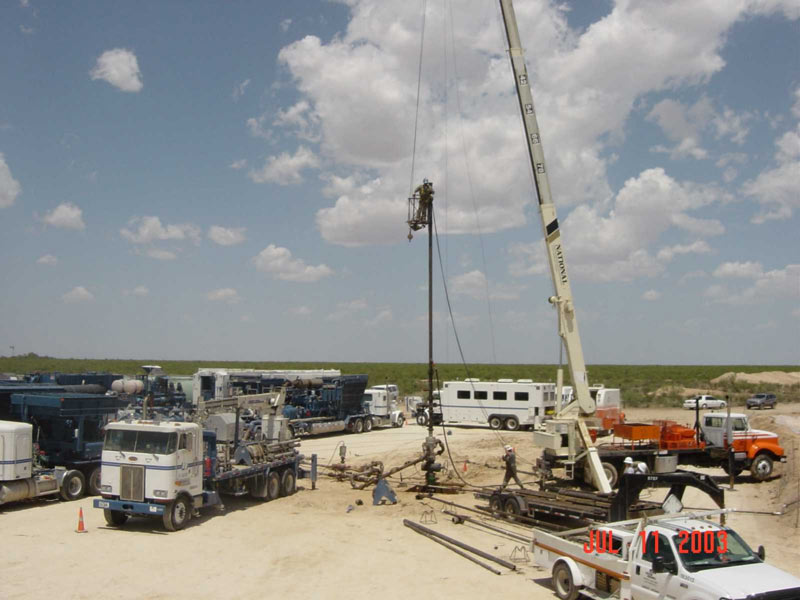 Beverly #1 completion, Chickadee Prospect, Upton County, 2003.
Beverly #1 completion, Chickadee Prospect, Upton County, 2003.- Henry Petroleum ended 2006 with 103 employees, and 10 rigs running in the Wolfberry.
- Henry sold its Sweetie Peck property to St. Mary Land & Exploration for $250 million. Henry owned about $60 million of that, and the rest was owned by Jeff Sandefer and Sandefer Capital Partners. The sale proved a significant moment for both parties.
- Jim and Paula Henry formed the Henry Foundation, an effort to give back to their community with a mission of “Focusing Resources to Change Lives."
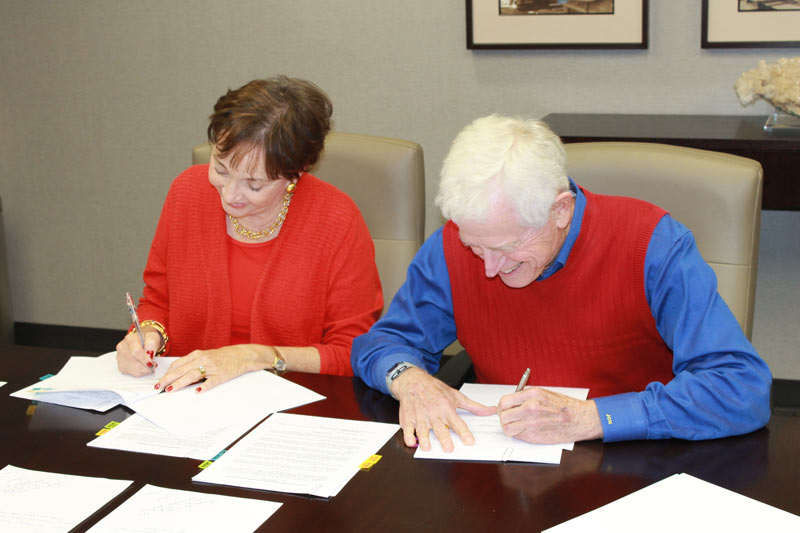 Paula and Jim Henry signing formation documents.
Paula and Jim Henry signing formation documents.- Dennis Johnson and his son Matt leave Henry to form Summit Petroleum. Dennis and Summit take roughly a quarter of the assets Henry owned at the time in accordance with the equity Dennis had earned in Henry over his tenure. Jim and Henry Petroleum keep the balance and continue to develop the vertical Wolfberry. Said Ronnie Scott of the amicable split: “From Summit’s perspective and from ours, too, Dennis had a goal to not impact our employees because of this. We said from the beginning we would guard our hearts and go through this exchange as Christians – and we did. We said from the start we were going to create two strong independent oil companies – and we did."
- Ronnie Scott succeeds Dennis Johnson as President of Henry.
- Danny Campbell, David Bledsoe, and Billy Bledsoe join Henry.
 Matt Johnson, Dennis Johnson, and Ronnie Scott at the company meeting announcing the Johnson's departure from Henry to form Summit.
Matt Johnson, Dennis Johnson, and Ronnie Scott at the company meeting announcing the Johnson's departure from Henry to form Summit.- Jim Henry and Tim Leach complete a $600 million transaction, selling ~90% of Henry Petroleum to Concho Resources.
"Paula and I considered a number of factors when deciding whether to sell,” Jim said. “One was that we had grown to over 100 employees and we were uncomfortable being that large. We preferred the small company feel of about 50 employees. Selling allowed us to share with our employees a substantial amount of the financial gain they had generated for the company. Employees were paid according to our incentive compensation plan which generated bonuses multiple times their annual salary.”
- Following the sale, the newly renamed Henry Resources developed acreage that was not included in the sale to Concho, and ran 1-5 rigs drilling vertical Wolfberry wells.
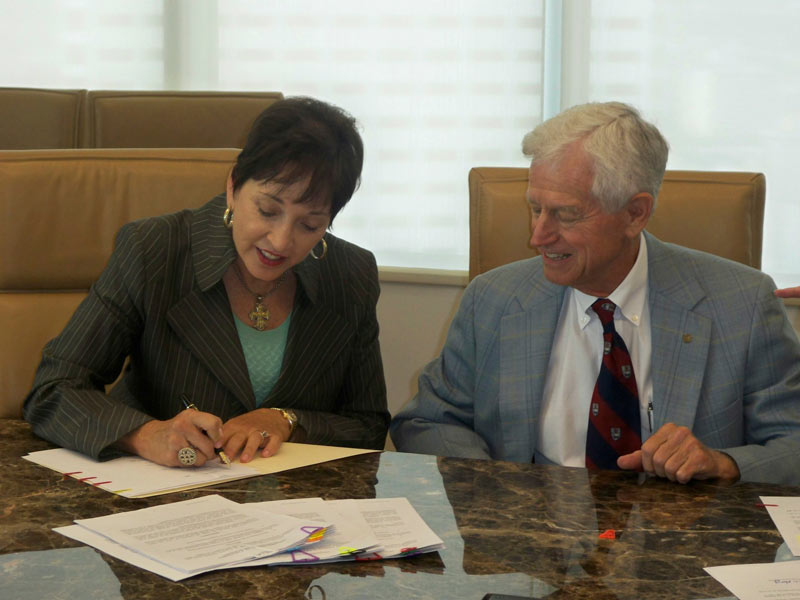 Paula & Jim Henry signing closing documents, finalizing the sale of Henry Petroleum to Concho Resources in 2008.
Paula & Jim Henry signing closing documents, finalizing the sale of Henry Petroleum to Concho Resources in 2008.- In 2010, Henry monetizes certain Midland Basin assets in a $305 million sale to Linn Energy.
- Not yet ready to pursue horizontal unconventional projects due to high acreage costs, Henry continues to focus on the Wolfberry and other vertical plays for the next few years. Following Jim's advice to "Do something, even if it's wrong. We can always correct as we go", Henry attempts to uncover the next Wolfberry-like vertical play. The organization takes the same stacked pay methodology outside the Midland Basin to parts of the Central Basin Platform and other remote areas of the Permian.
- David Henry succeeds Jim Henry as CEO of Henry Resources, 2012.
- Danny Campbell succeeds Ronnie Scott as President of Henry Resources, 2012.
- Terry Creech becomes CEO of the Henry Companies, overseeing both Oil & Gas and Investments, 2013.
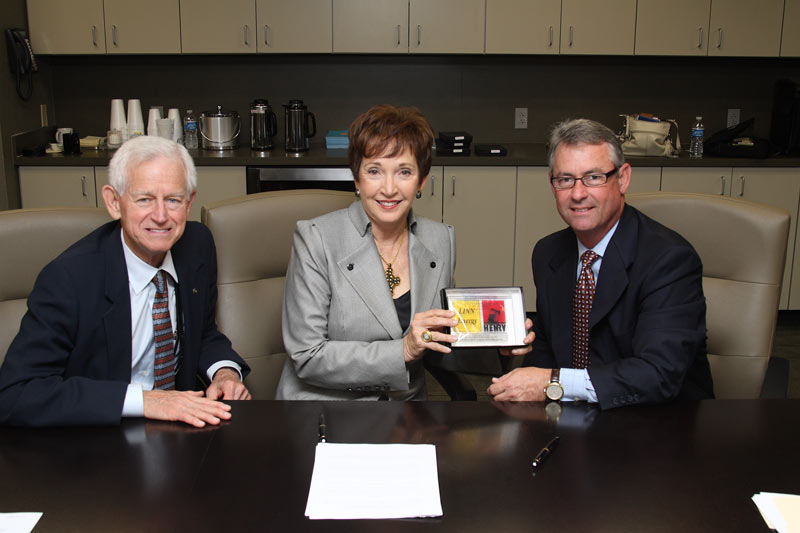 Jim & Paula Henry, Linn Energy closing, 2010.
Jim & Paula Henry, Linn Energy closing, 2010.- Henry sells East Cowden asset to Diamondback in a $288 million transaction.
- Henry drills its first horizontal Spraberry well in Midland County, and in doing so, shifts its capital focus to horizontal drilling in the Midland Basin.
“From 2001 until about 2012, we were the dominant vertical driller in the Wolfberry. We stayed that course when everyone else began to shift their focus to horizontal plays because it had been successful for us for so long. For several years we resisted getting into the horizontal resource plays because the entry costs seemed too high. Ultimately, we realized we needed to focus our investment on the low-risk geology in the core of the basin. That's when we shifted our focus to horizontal drilling,” Jim said.
- Henry again forms JV partnership with Chevron, south of Midland International Airport. The project, initially viewed as vertical Wolfberry development, would turn out to be a stellar horizontal Spraberry project for both companies.
 Blake Braun (left), Jim Henry, and friends on location at a Henry Resources horizontal rig.
Blake Braun (left), Jim Henry, and friends on location at a Henry Resources horizontal rig.- Danny Campbell moves over to head Investments as Chief Development Officer, David Bledsoe succeeds Danny as President of Henry Resources.
- Henry reorganizes and adds staff to complete transformation into a fully horizontal-focused organization, moving into development mode on its Midland Basin horizontal assets.
“When we decided to transition from vertical to horizontal after Danny Campbell became President, he told our team that we needed to become horizontally competent as soon as we could. Some of our people had drilled horizontals at other companies; some had not. It took a while to get there, 15 months or so, but we did. Now we have a very capable horizontal team that competes with the best out there”, Jim said.
- Henry adds first Delaware Basin assets to its operated horizontal portfolio.
 Side-by-side Henry horizontal rigs, Midland County.
Side-by-side Henry horizontal rigs, Midland County.- Henry Resources celebrates its 50-year anniversary, proud to be one of the few oil and gas companies that have weathered the ups and downs of the industry for a half-century.
“When we started drilling Wolfberry wells in the Wolfcamp and Spraberry, we were recovering about 5 percent of the oil in place, leaving behind 95 percent. Now, drilling horizontally, we're probably recovering closer to double, 10 percent, while leaving behind 90. Technological advances, that nobody can envision right now, will ultimately help us get some of that incremental 90 percent. It's hard to predict when, but it will happen. If you look at oil in place, it’s in the trillions of barrels. We'll be working on this resource for a very long time.” — Jim Henry
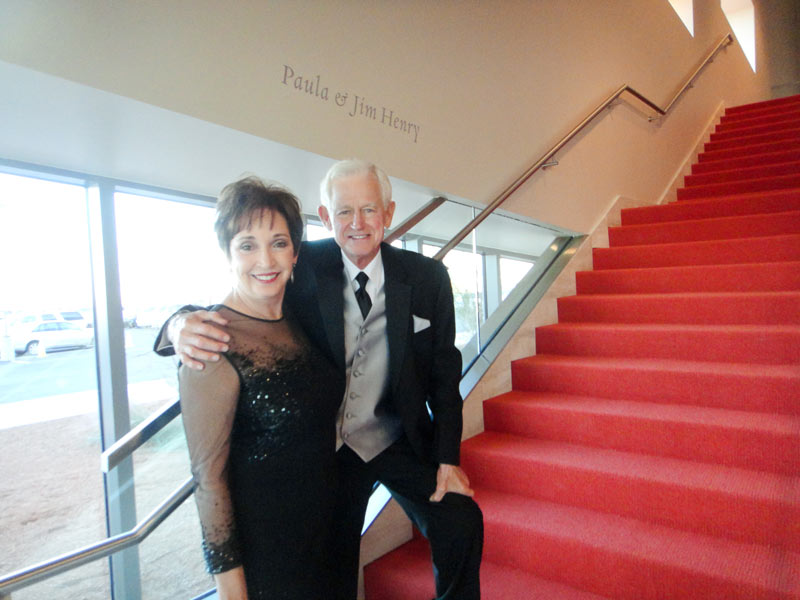 Paula & Jim Henry at Wagner-Noel Performing Arts Center.
Paula & Jim Henry at Wagner-Noel Performing Arts Center.CONTACT
3525 Andrews Hwy
Midland, TX 79703
Phone: (432) 694-3000
